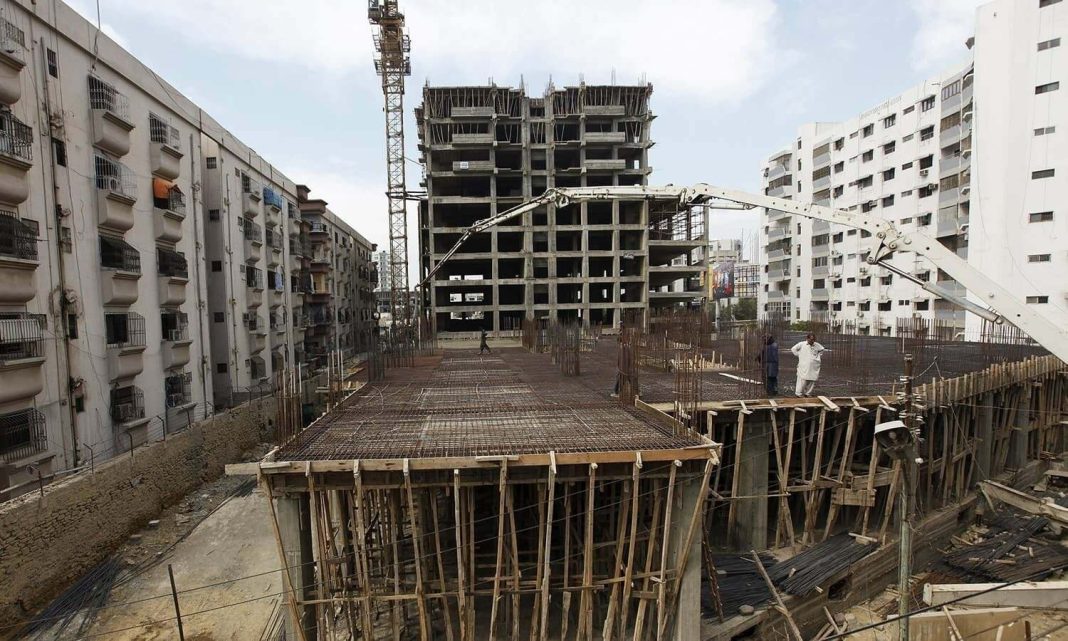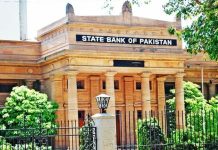
ISLAMABAD: Real estate emerged as a significant contributor to the GDP in the last six fiscal years (2016-2022) in relation to the construction activity, reports WealthPK quoting data from the Pakistan Credit Rating Agency (PACRA).
With a notable share in the country’s economic output, this sector accounted for approximately 4.9% of the GDP in FY22, slightly lower than the previous year’s contribution of around 5.4%.
Further, in terms of Gross Fixed Capital Formation for the Private Sector, construction constituted approximately 0.9%, while real estate constituted a substantial 17.6% during FY22, ranking as the second-highest sector after agriculture.
However, it is noteworthy that in the current fiscal year, the budget allocation for housing and works (construction of roads, refurbishment of public property, and infrastructure development) experienced a slight reduction of about 2.0% compared to the preceding fiscal year’s allocation of around 3% due to the ongoing economic crisis.
Moreover, during the period spanning from the CY2018 to the fourth month of CY2023 (CY18-4MCY23), the KSE-100 index returns exhibited significant volatility in comparison to the housing price index. This volatility in returns entails increased opportunities for potential gains and losses.
From CY20 onwards, the housing prices experienced an upward trend, primarily attributed to a surge in demand for residential real estate following the introduction of government initiatives aimed at supporting builders, developers, and prospective homeowners.
However, throughout the period from CY20 to 4MCY23, the housing price index demonstrated a resilient performance, maintaining a buoyant trajectory. While the real estate activity experienced growth during CY22, it subsequently encountered a notable deceleration during 4MCY22, potentially attributable to reduced overall investments in the sector.
As for 4MCY23, the housing price index exhibited a downward trend, standing at approximately 4.3% in contrast to the upward trajectory observed in the previous year (CY22: ~25.3%).
This decline can likely be attributed to the discontinuation of government housing schemes and persistent high levels of inflation prevailing in the country, with house rents constituting around 19.3% of Urban CPI and approximately 8.6% of Rural CPI.
Pakistan has experienced a compound annual growth rate (CAGR) of approximately 2.0% in its population during the fiscal year 2018-2022, with a growth rate of about 1.98% in FY22. If this trend continues, the population is projected to reach around 231.6 million in the next fiscal year. The increased demand for housing, particularly in urban areas, is commonly associated with the population growth.
According to the Pakistan Social and Living Measurement (PSLM) CY19-CY20 survey conducted by the Pakistan Bureau of Statistics (PBS), the average number of occupants per housing unit is approximately 6.56.
The survey also indicates that the housing units have an occupancy rate of about 82%, while the rented spaces account for approximately 11% of the total housing stock in both rural and urban areas of Pakistan.
The housing demand in Pakistan witnessed significant growth in FY22, largely attributed to the introduction of two mark-up subsidy schemes by the State Bank of Pakistan (SBP), namely “Mera Ghar Mera Pakistan” for the residents and “Roshan Apna Ghar” for the expatriates. However, the former scheme lies suspended since June 2022, resulting in a declining trend in house financing.
Furthermore, the surge in commercial and residential real estate activities in FY22 can be attributed to factors such as the tax amnesty scheme, lower interest rates, and tax incentives. –INP





